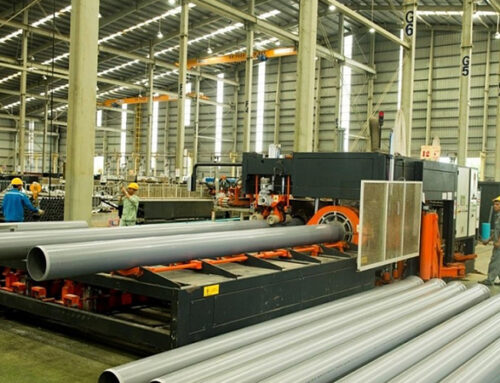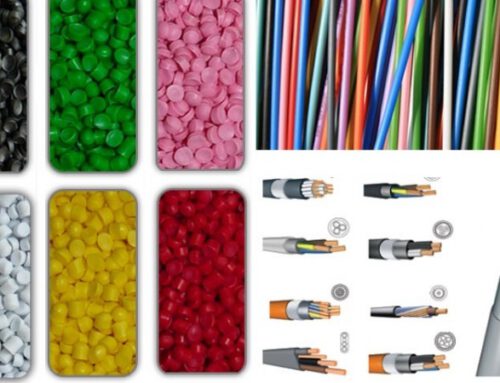High density polyethylene (HDPE) or high density polyethylene (PEHD) is a thermoplastic polyethylene made from petroleum. It is sometimes called “alkathene” or “polythene” when used for pipes. HDPE is the result of polymerization from high density ethylene to low pressure, in addition to combining catalysts such as chromium or silloc catalyts … With high strength-density density, HDPE is used in production. plastic bottles, corrosion resistant tubes, geographic masks and styrofoam wood. HDPE is usually recycled, and has the number “2” as its plastic identifier. This is also the material that produces plastic bags or many other plastic utensils
Outstanding properties of HDPE plastic resins
- HDPE is a plastic with extremely good durability, resistant to natural corrosion such as water, wind, acid rain … to the erosion of solutions such as concentrated acids, alkalis, salts, … HDPE plastic also withstands ultraviolet rays from direct sunlight.
- HDPE also has outstanding heat resistance compared to other conventional plastic materials: plastic pipes made from HDPE materials still do not change pressure even at temperatures of -40 ° C. Besides, the fire resistance of this material is also very explosive, only igniting at a temperature of 327 ° C (almost 2 times higher than other materials).
Application of HDPE plastic
In addition to the physical advantages, HDPE plastic is always cheaper than other types than products made from metal or other alloy materials. Besides, HDPE plastic also has light weight, higher durability, making it easy for users in the process of assembly, construction and maintenance later.
In the light industry, HDPE plastic is used as water supply and drainage pipes. Especially in areas with complex terrain, the use of HDPE plastic pipes becomes even more convenient thanks to its light weight, flexibility, so it is easy to construct and install. HDPE pipes all have a very long life, if the construction is done correctly, the life of the pipe can be up to 50 years. In urban areas or industrial zones, HDPE plastic pipes are always used to make large waste pipes.
In the energy industry, HDPE pipes with very low pressure resistance, ductility and heat transfer index should be made of electrical wiring pipes, hot and cold water supply pipes (pressure 4-10 kg / cm2), pipes steam (heating pipes), electrical cables, drainage pipes.
In 2007, the global HDPE market achieved production of more than 30 million tons.
Low Density Polyethylene (LDPE) is a thermoplastic made from the Ethylene monomer. It was the first polyethylene layer produced in 1933 by Imperial Chemical Industries (ICI) using a high pressure process through a free radical polymerization process. Its producers use the same method today. The EPA estimates 5.7% of LDPE (recycling # 4) is recycled. Competing from more modern polymers, LDPE continues to be an important plastic. In 2013, the LDPE market worldwide reached a volume of about 33 billion USD.
While there are many types of PE, the two most common are low density polyethylene (LDPE) and high density polyethylene (HDPE). Just as PVC and CPVC are kissing cousins in the polymer world, LDPE and HDPE have a lot in common – as well as many differences.
Produced through free radical polymerization, LDPE has the longest and shortest branch of any type of PE, resulting in a lower density. Branching keeps the chains of molecules tightly closed in their crystal form, so LDPE has a lower tensile strength but more flexibility. This “special” specialty makes LDPE particularly useful for a wide range of applications, from hard products like plastic bottles, buckets and bowls to things like grocery bags and plastic wrap. Do you have breakfast cereals? The lining of the milk box and the plastic bag inside the cereal box can be made of LDPE.
On the opposite side of the polymer chain, we have HDPE, which is characterized by minimal branching of the polymer chain. Less branching means these unique linear molecules fuse together during the crystallization process, making HDPE more dense and rigid. That suggests that the tensile strength HDPE is the PE of choice for applications requiring a more “backbone”, such as milk and bleach bottles, garbage cans, plumbing pipes and children’s toys. That is also one of the reasons why HDPE has largely replaced cardboard as the pipe material of choice in fireworks making. The HDPE pipe is less prone to breakage if the fireworks fail, and once the exhaust in the pipe is exhausted, the HDPE pipe is recyclable.
Outstanding properties of LDPE resin
There is transparency, fine gloss on the surface, can be waterproof, but can corrode over time due to the impact of air and oxidizing substances outside the environment.
Application of LDPE plastic
LPDE plastic beads for packaging, plastic bags, paper containers, foam bags (garbage bags, grocery bags, bags in shops and small supermarkets….
LPDE plastic resins are poly-Ethylene (PE) and Polypropylene (PP) groups that are generally considered safe, and are only safe when the product is made from unprocessed virgin ldpe.
You should also use only those plastic products 1-2 times. When choosing plastic household products, especially for food containers, be very careful and carefully consider the names and composition of those plastics whether they belong to the two above-mentioned plastic groups on the bottom of the plastic. Plastic bottles and boxes. It is best to buy items made of original materials, do not mix recycled materials. Should choose to buy brands printed as well as origin





Leave A Comment